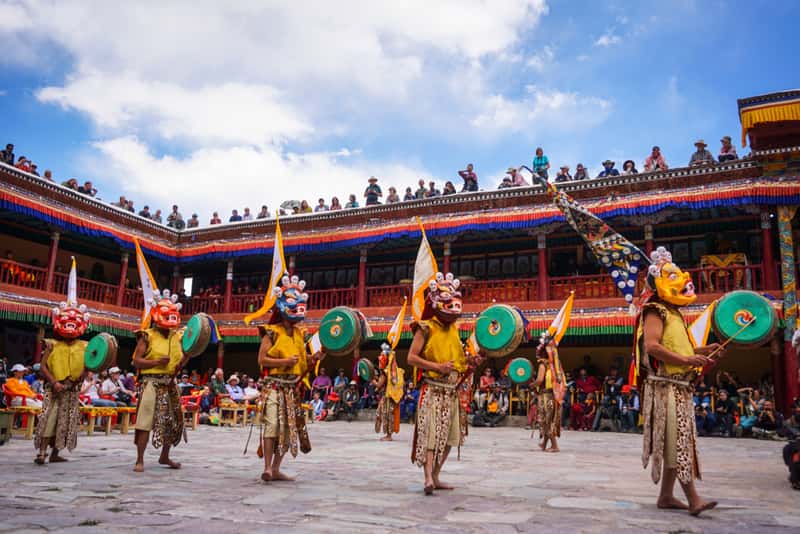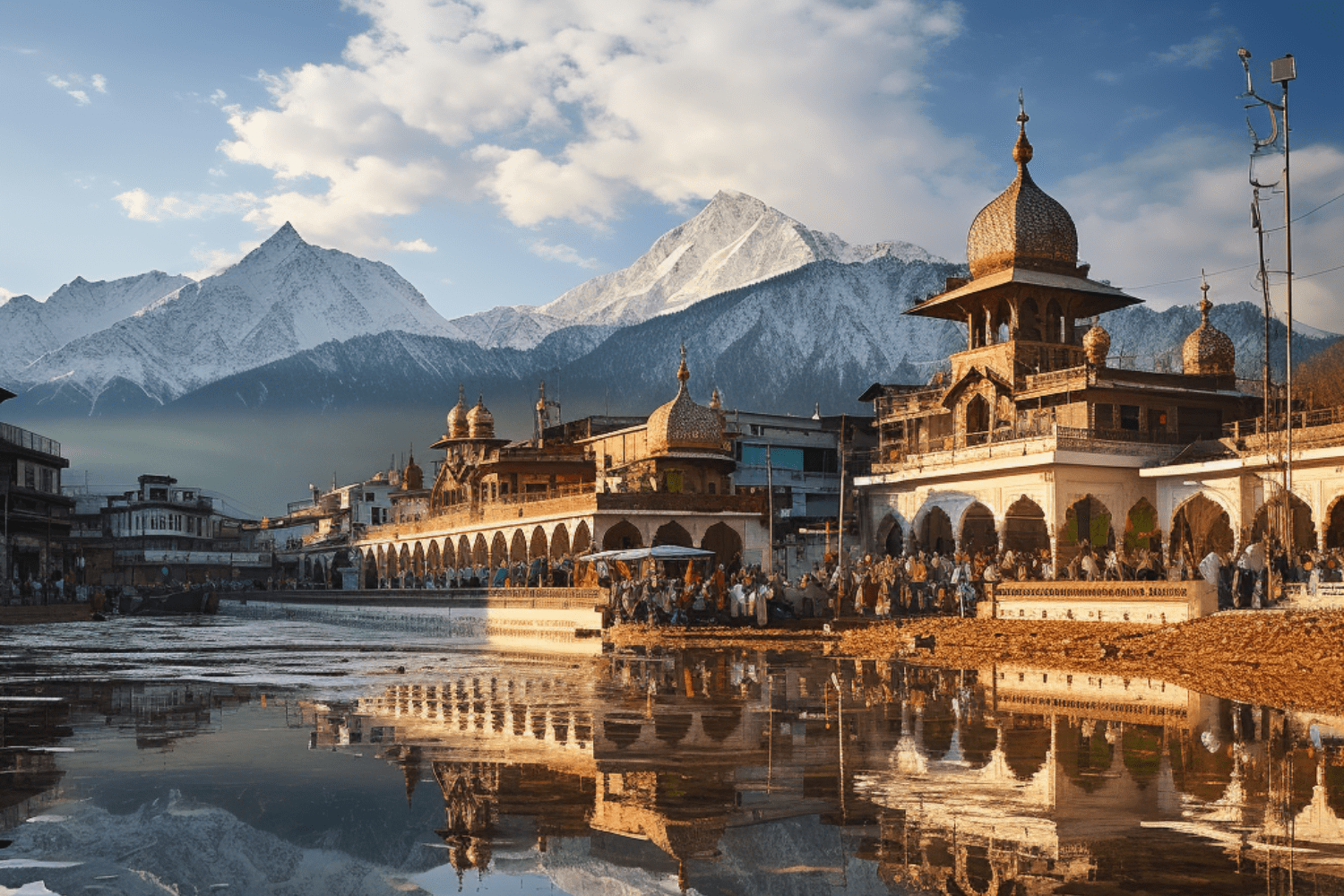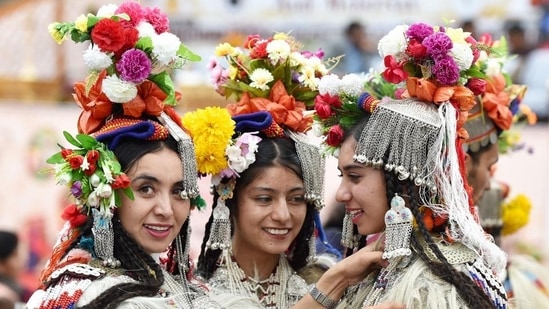A Glimpse into the Spiritual and Cultural Richness of Jammu and Kashmir
Kashmir, often referred to as "Paradise on Earth," is renowned for its breathtaking landscapes, serene lakes, and snow-capped mountains. Beyond its natural beauty, Kashmir is also a land rich in religious and cultural heritage. The region is home to diverse religious places in Kashmir and there are vibrant festivals in Jammu and Kashmir that reflect its historical and spiritual significance.
Religious Places in Kashmir
1. Shankaracharya Temple: Perched on the Shankaracharya Hill, the Shankaracharya Temple is one of the oldest and most revered Hindu shrines in the Kashmir Valley. Dedicated to Lord Shiva, this ancient temple is believed to have been visited by Adi Shankaracharya in the 8th century. The temple offers a panoramic view of Srinagar and the Dal Lake, making it a spiritual and visual treat for visitors.
2. Hazratbal Shrine: Located on the northern shores of the Dal Lake, the Hazratbal Shrine is the holiest Muslim shrine in Kashmir. It houses a relic believed to be a hair of the Prophet Muhammad. The shrine's pristine white marble structure and its serene surroundings attract devotees and tourists alike. The annual celebrations during the festivals of Eid and Milad-un-Nabi see a significant influx of pilgrims.
3. Amarnath Cave Temple: The Amarnath Cave Temple is one of the most important Hindu pilgrimage sites, dedicated to Lord Shiva. Situated at an altitude of 3,888 meters, the temple is famous for the naturally occurring ice Shiva Lingam. The annual Amarnath Yatra, which takes place in the summer months, draws thousands of devotees who undertake a challenging trek to pay their respects.
4. Jama Masjid: Situated in the heart of Srinagar’s old city, the Jama Masjid is a stunning example of Indo-Saracenic architecture. Built in 1394 by Sultan Sikandar, it features 378 wooden pillars and an expansive courtyard. The mosque is not only a place of worship but also a center for social and cultural gatherings.
5. Kheer Bhawani Temple: Located in the village of Tulmulla, about 25 kilometers from Srinagar, the Kheer Bhawani Temple is dedicated to Goddess Ragnya Devi. The temple is named after the rice pudding (kheer) that is offered to the goddess by devotees. The annual festival of Mela Kheer Bhawani, held on the occasion of Zyestha Ashtami, sees thousands of devotees thronging the temple.
Festivals in Kashmir
1. Navroz: Navroz, the Persian New Year, is widely celebrated by the Shia Muslim community in Kashmir. It marks the beginning of the spring season and is a time for family gatherings, feasting, and prayers. Traditional foods, such as lamb dishes and sweets, are prepared, and homes are decorated to welcome the new year.
2. Eid-ul-Fitr and Eid-ul-Adha: Eid-ul-Fitr marks the end of Ramadan, the holy month of fasting, while Eid-ul-Adha commemorates the willingness of Prophet Ibrahim to sacrifice his son in obedience to God. Both festivals are celebrated with great fervor in Kashmir. Special prayers are held in mosques, and families come together to share festive meals and distribute alms to the needy.
3. Maha Shivaratri (Herath): Maha Shivaratri, locally known as Herath, is a significant festival for Kashmiri Pandits. It is dedicated to Lord Shiva and Goddess Parvati and is celebrated with night-long vigils, prayers, and the offering of walnuts as a symbol of fertility. Special dishes, such as fish and rice, are prepared for the occasion.
4. Baisakhi: Baisakhi, primarily a harvest festival, is celebrated with enthusiasm by the Sikh community in Kashmir. It also marks the Punjabi New Year and the formation of the Khalsa in 1699 by Guru Gobind Singh. The festival involves prayers, kirtans (devotional songs), and community feasts known as langars.
5. Hemis Festival: The Hemis Festival, held in the Hemis Monastery in Ladakh (part of the greater Kashmir region), is a vibrant celebration dedicated to Lord Padmasambhava (Guru Rinpoche). The festival features colorful masked dances, traditional music, and rituals performed by the monks. It is one of the most significant Buddhist festivals in the region.
6. Tulip Festival: While not a religious festival, the Tulip Festival in Srinagar has become a major cultural event. Held in April, the festival showcases the stunning bloom of tulips at the Indira Gandhi Memorial Tulip Garden, Asia's largest tulip garden. The event attracts tourists from across the globe and highlights Kashmir’s natural beauty and cultural heritage.
Conclusion
Kashmir’s religious places and festivals are a testament to its rich and diverse cultural tapestry. These sacred sites and celebrations not only provide spiritual solace to the faithful but also offer a glimpse into the region’s historical and cultural richness. Visiting these places and participating in the festivals provides an enriching experience that deepens one’s understanding of Kashmir’s unique heritage.



Comments
Post a Comment